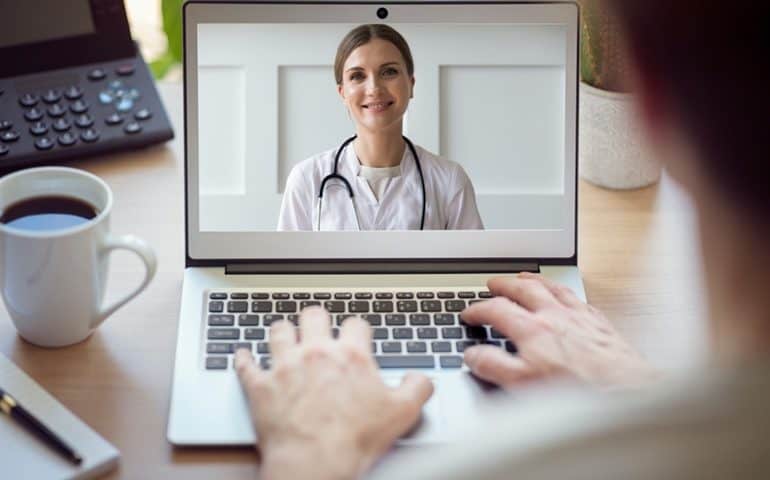Health news
Virtual visits have become a more familiar part of American health care. While doctors and patients may miss the face-to-face interaction, telemedicine options
allow people to confer with physicians and clinicians over the phone, tablet or computer.
“Virtual visits are an efficient and convenient way for health care providers to see and treat people,” said Dr. Stephen Morgan, senior vice president and chief
medical information officer at the Carilion Clinic and a faculty member at the Virginia Tech Carilion School of Medicine.
“Telehealth is a delivery model that connects the medical professional with a patient through a technology platform,” said Darwin Fogt, a practicing physical
therapist and founder of Phzio, a telerehab platform with more than 1,000 therapists in 40 states. “This allows the patient and provider to be located in different geographic places. The medical professional can communicate freely with the patient and conduct tests to determine diagnosis and establish
a plan of care.”
Virtual visits have existed for years, first adopted by rural communities that did not have access to medical services, Fogt said. They became more prevalent after the COVID-19 crisis made people hesitant to visit hospitals and clinics filled with sick people.
They can be done live by telephone or video or through an asynchronous visit, where the patient uses a secure HIPAA-secure platform to share information,
photos or video and a physician responds at another time, Morgan said.
The length of time spent on a virtual visit is often the same as an in-person visit, but wait time for an appointment is often a little less, plus there’s the convenience of not having to get to the office and wait, Morgan said. In addition to improved access to care, other benefits of telehealth include reduced
costs and reduced risks of exposing oneself to other sick patients, Fogt said.
Laws vary by state, and a face-to-face visit may be required before establishing virtual care, Morgan said. Physicians can prescribe medications and
digitally send a prescription to a local pharmacy.
While virtual visits are not for every condition, they work well for a variety of treatments including follow-up visits for people suffering from chronic illnesses
such as diabetes; diagnosing fever, sore throat, cough or allergies; and physical therapy, Morgan said. Some specialties like dermatology and psychiatry can mirror in-person visits.
“They do not lend themselves to care where I need to see a patient and do an exam, if I have to listen to the heart or lungs or palpate or feel something,”
Morgan said. To make the most out of your virtual visit, prepare for it in the same way you would for an in-person visit, Morgan said. Be ready with
any issues and questions you would like the physician to address as well as a list of medications you’re currently taking.
Ensure your technology works and you have an adequate network signal from Wi-Fi or cellular. “Oftentimes, this means turning off any other device in the home which may be using bandwidth or streaming other content,” Fogt said.
Make sure the room is quiet without distracting ambient noise and that the lighting is good, Morgan said.
Telehealth is a benefit for both patients and medical experts and well suited for the next generation of providers, Fogt said.



